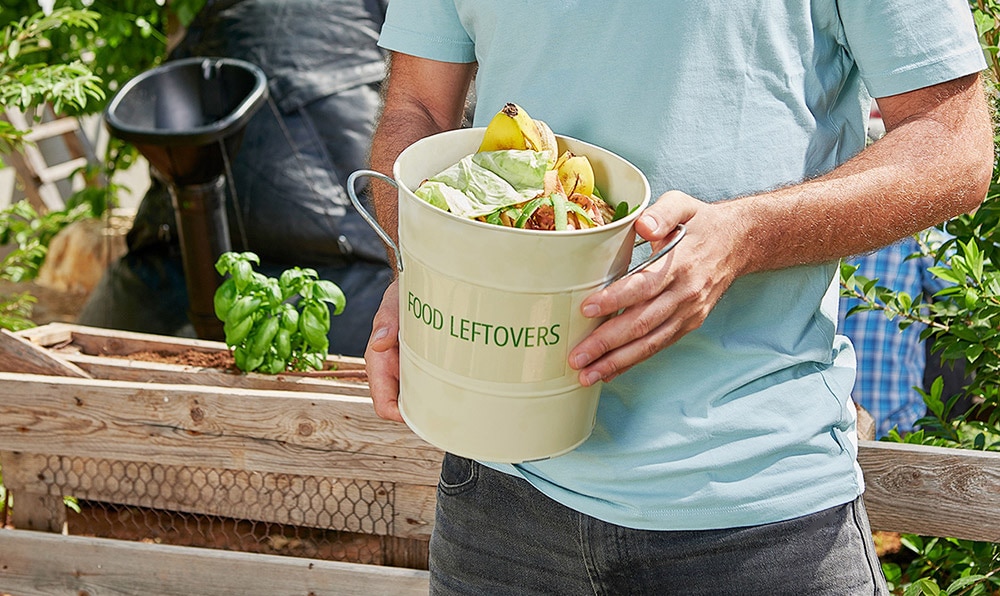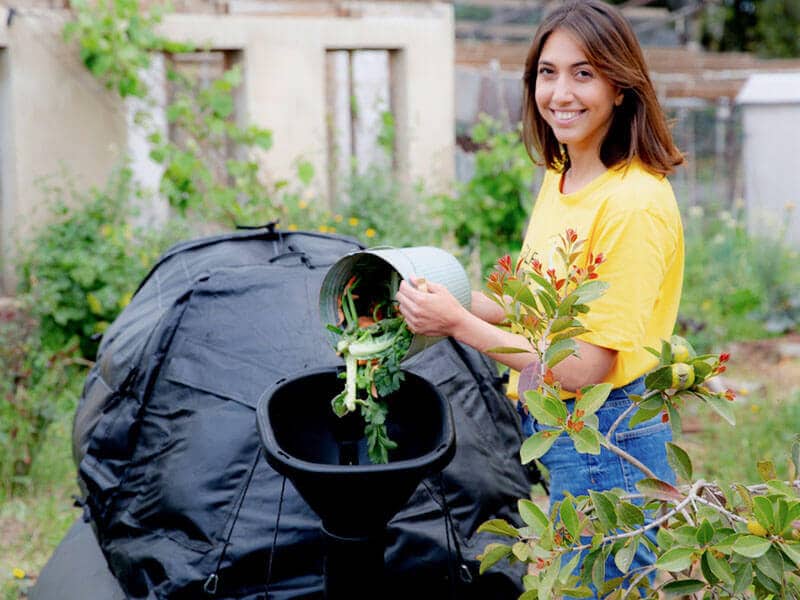
Intro About Biogas Production
Excuse me. That’s what you say when you pass gas, right? It can make a sound, give off a smell and be downright embarrassing. In fact, my cheeks are brightening up as I write. Needless to say, the word ‘gas’ gets a pretty bad rap. There’s greenhouse gas, which is harmful to our environment. There’s the act of passing gas, which I’ve already covered. There’s the act of not passing gas, which is often an issue for babies, a source of pain for both them and their doting caregivers. Then of course there is gas for our cars, airplanes and machinery, which comes with a host of complications that I won’t even attempt to write about right now.
Don’t let the bad connotation that sometimes comes alongside the word ‘gas’ scare you away from biogas, an incredible, renewable energy that has the ability to positively impact our lives and our planet.

What is Biogas Production?
I’ve got great news for you! Biogas production happens naturally and believe it or not, one of the primary locations that biogas is produced is in landfills. Biogas production can even occur in nature, without any outside assistance from humans, at all.
Biogas is produced by the anaerobic decomposition of biomass by anaerobic bacteria. Simply put, biogas is a natural (also known as biological) generated gas that is produced when organic materials, such as plant and animal products, are broken down by bacteria in an environment free of oxygen. This automatic process is called anaerobic digestion.
Taken a step further, when humans facilitate the naturally occurring process of biogas production, truly incredible, earth saving magic can occur.
What is the Process of Biogas Production?
Biogas production for use takes place in an oxygen free vessel. Organic materials such as food waste, agricultural waste and manure are fed into the vessel. When these different types of waste are fed into the vessel together, an even more efficient process called co-digestion occurs and biogas can be produced at an even faster rate.
When produced naturally at landfills, biogas is wasted and the organic materials that could have otherwise been harnessed as a source or renewable energy, are lost into the environment, never to be used again. According to the Environmental and Energy Study Institute, 21 percent of US landfills are made up of food waste. Along with fat, oil and grease collected from the food service industry, these forms of organic matter could be redirected to biogas digesters and produce biogas for use, instead of being released into the atmosphere.

Ways to Produce Biogas
There are a variety of ways to produce biogas for use. Although it occurs naturally, to make the most of biogas, an oxygen free vessel or digester is required. It can be produced on farms, off the grid, and with options for small and efficient systems, biogas can even be produced at home, by individuals.
In addition to food waste, both animal manure and even human waste can be used to produce biogas. The actual process of biogas production occurs when these forms of organic material are fed into an oxygen free environment, like the HomeBiogas system, where hungry bacteria break down the waste through anaerobic digestion.
Once produced, biogas can be used in a variety of ways. HomeBiogas digesters come with a gas piper and a biogas stove. Organic waste is fed into the vessel, transformed into biogas, travels through the pipe and delivers a safe, odorless and smokefree renewable gas to the biogas stove. With 96% of chefs prefering to cook with gas stoves instead of electric ones, biogas production for use is an ideal solution for anyone who shares a love for cooking as well as a love for the environment.
Taking the productivity one step further, while turning food waste into renewable energy, HomeBiogas systems also produce bio-fertilizer, an organic, nutrient rich, free-flowing fertilizer that comes out of the digester and can be used in both the planting and growing process.
The Benefits of Biogas Production
You’ve probably caught onto the fact that the production and use of biogas solves a host of problems. Firstly, the materials involved in biogas production for use are things that we typically consider to be garbage. Normally sent off to landfills, this ‘trash’ takes up space while slowly rotting away and damaging our environment. As an alternative to dumping food waste into landfills, when used for biogas production, this organic matter that otherwise would have been seen as trash serves as the main ingredient in producing an energy source.
Whether it be in a home, a restaurant or on a farm, a lot of guilt accompanies food waste. While it’s never a positive to throw out food gone bad that otherwise would have been eaten or meals that were only picked over, in addition to the organic food matter that isn’t for eating, things that we should have or could have eaten, also serve as organic materials to feed a biogas digester. Sometimes food goes bad before we have the chance to eat it and there is very little we could have done to avoid wasting it. Knowing that the wasted food can circumvent taking up space in a landfill and will be repurposed as a source of renewable energy is an added benefit of biogas production.
As it becomes easier and more convenient to produce biogas as an individual, we can reap the rewards of biogas production. For example, for those striving to lead more sustainable lives, biogas production is an ideal addition to their lives. If living off the grid, having a biogas digester onsite allows owners to hold onto organic matter instead of needing to send it off-site. They are able to feed the organic matter into a digester, enjoy several hours of biogas for cooking and access the bio-fertilizer to use in planting and growing crops. People producing biogas are able to save money on gas for cooking and store bought fertilizer while having a productive place to dispose of their organic matter.
The same goes for restaurants or lodging with kitchens as well as farm to table restaurants. Onsite biogas production provides gas good cooking, fertilizer for growing crops and reduces the need to store and eventually send out waste. An added benefit of onsite biogas production at places like these is that a domino effect can often occur. For example, when an eco-lodge or hostel powers a stovetop with biogas produced onsite in a kitchen used by guests, they are demonstrating just how easy and efficient biogas production can be. The more diners and travelers get used to seeing biogas production being used in everyday establishments the more they’ll understand they can also produce and use biogas.

The Future of Biogas Production
From the Renewable Fuel Standard to the Farm Bill, there are all sorts of wonderful initiatives happening nationwide in the United States and in countries scattered all over the globe that raise awareness and encourage production of biogas and its use as a renewable source of energy. According to a report by the USDA (United States Department of Agriculture), domestic livestock markets are responsible for almost one third of the country’s methane emissions. The USDA continues to research biogas production and to create initiatives encouraging its use.
As producers of biogas digesters being used worldwide, we at HomeBiogas are thrilled that biogas production is on the rise and that government agencies recognize the potential it has to change the way we treat our world. Of course, we also want individuals to know that biogas production is not limited to organizations with government funding or people living an off the grid, completely self-sustaining lifestyle.
HomeBiogas is proud to make the production and use of biogas accessible to people from all walks of life. In fact, we’ve enabled people from across the globe to produce biogas for personal use and yes, we are pretty ecstatic about that.

Are you acting as THE change that you want to see in the world? Do you recycle food packaging? How about bringing reusable grocery bags when you do your food shopping? Do you try to remember to turn off the lights when you leave the room? Has turning the water off while brushing your teeth been a goal? These are all little actions that many of us attempt to do. Even if we don’t have a 100 percent success rate, just trying and sometimes succeeding in taking these steps can help change our world for the better.
If you, like us, believe in the power of individuals to change the world, by implementing practical tools into our daily lives and by encouraging organizations, groups and individuals to do the same, we think you’re ready to take the leap. Whether it be to save time, space, money or a combination of them all, in our seemingly non-stop lives, we gravitate toward multitasking systems. With a vision to promote sustainability while improving lives, we are proud to offer a solution that checks a whole lot of boxes. Take a look at the HomeBiogas products to see which one best suits your lifestyle, your goals and will most easily integrate into your daily activities.






